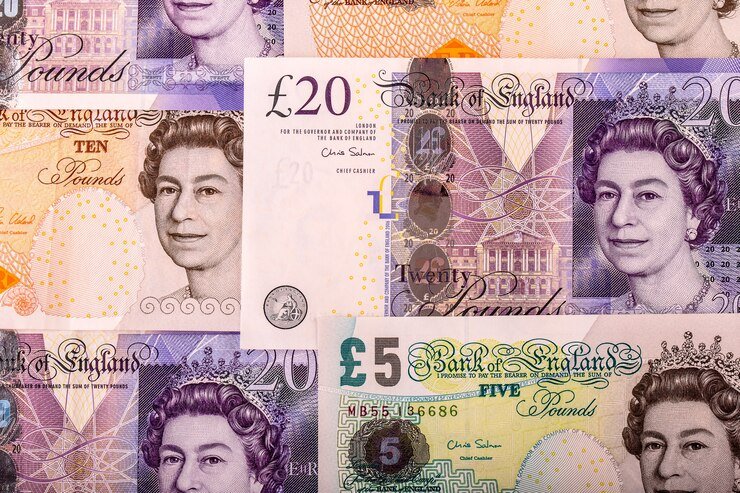Gold Prices Soar to New All-Time Highs as Trade War Jitters, Inflation Loom
Prices of gold (XAU/USD) have maintained their bull run and even reached new all-time highs near the $2,896-$2,897 level as haven demand increases amidst heightened trade war jitters and inflationary pressure. US President Donald Trump declared new 25% tariffs on steel and aluminum imports, in addition to threatened retaliatory measures, which raised uncertainty and have prompted investors to rush to the safe haven. Meanwhile, upbeat US jobs data and persistent inflation worries are expected to keep the Federal Reserve cautious about rate cuts, providing further support to gold prices. Despite modest US Dollar strength and overbought technical conditions, the fundamental backdrop suggests the path of least resistance remains to the upside. Traders now await Fed Chair Jerome Powell’s testimony and key inflation data for further direction. KEY LOOKOUTS • Trump’s new tariffs on steel and aluminum escalate US-China tensions, driving investors toward safe-haven assets like gold amid economic uncertainty. • Rising inflation fears, fueled by protectionist policies, strengthen gold’s appeal as a hedge against price increases despite the Federal Reserve’s cautious stance. • The Fed’s decision on interest rates remains key, as resilient labor market data and inflation trends could impact gold’s bullish momentum. • Gold faces resistance near $2,900, while overbought RSI signals possible consolidation; key support levels to watch are $2,855 and $2,834. Gold prices continue to rally amid escalating trade war fears and inflation concerns, driven by US President Donald Trump’s announcement of new tariffs on steel and aluminum imports. Investors seek refuge in the safe-haven metal as economic uncertainty looms, while inflationary pressures further boost gold’s appeal. Despite the Federal Reserve’s cautious stance, resilient US labor market data and persistent inflation could limit room for further rate cuts, supporting gold’s bullish outlook. However, technical indicators signal overbought conditions, suggesting potential consolidation near the $2,900 resistance level, with key support at $2,855 and $2,834 to watch for potential pullbacks. Gold prices surge to record highs amid escalating trade war fears and inflation concerns, with investors seeking safe-haven assets. While the Federal Reserve’s cautious stance supports gold, overbought technical conditions hint at possible consolidation near the $2,900 resistance level. • XAU/USD reaches a fresh all-time high around the $2,896-$2,897 region amid strong safe-haven demand. • Trump’s new 25% tariffs on steel and aluminum imports escalate US-China tensions, boosting gold’s appeal. • Protectionist policies may reactivate inflation, reinforcing the reasons to hold gold as a hedge against rising prices. • Strong labor market and inflationary worries might prevent the Fed from reducing interest rates, further supporting gold’s bullish outlook. • A slight USD advance might cap the rally in gold, but the fundamental setup is supportive. • Gold is resisted around the $2,900 area, with overbought RSI conditions pointing to consolidation. • Immediate support lies at $2,855 and $2,834, with a further decline targeting the $2,815-$2,800 range. Gold prices continue their upward trajectory, reaching a fresh all-time high around the $2,896-$2,897 region as investors seek refuge in the safe-haven asset amid rising economic uncertainty. US President Donald Trump’s announcement of new 25% tariffs on steel and aluminum imports has intensified fears of a trade war, prompting increased demand for gold. Additionally, concerns over inflationary pressures due to protectionist policies have further strengthened gold’s status as a hedge against rising prices. Meanwhile, the US labor market remains resilient, with a lower-than-expected unemployment rate, which could limit the Federal Reserve’s ability to ease monetary policy. Despite modest US Dollar strength, gold maintains its bullish momentum, signaling strong investor confidence in the metal. XAU/USD Daily Price Chart TradingView Prepared by ELLYANA Gold’s technical outlook remains bullish, but overbought conditions on the daily Relative Strength Index (RSI) suggest a potential short-term consolidation or pullback. The key resistance level stands at $2,900, and a sustained break above this could push prices toward $2,920-$2,930. On the downside, initial support lies at $2,855-$2,854, with stronger buying interest expected around $2,834. If bearish pressure intensifies, the next critical support zone is near $2,815-$2,800. Moving averages indicate continued strength, reinforcing the long-term uptrend, while traders closely watch upcoming economic data and Federal Reserve signals for further price direction. TECHNICAL ANALYSIS Gold (XAU/USD) remains in a strong uptrend, but overbought conditions on the daily Relative Strength Index (RSI) indicate the possibility of short-term consolidation or a minor pullback before further gains. The immediate resistance lies at the psychological $2,900 level, and a sustained breakout above this could push prices toward the $2,920-$2,930 range. On the downside, initial support is seen at $2,855-$2,854, with further key levels at $2,834 and $2,815. If gold breaks below these levels, a deeper retracement toward the $2,800 mark could follow. Moving averages continue to move up, specifically 50-day and 200-day EMAs. Traders would watch the short-term momentum indicators and price action for a breakout confirmation in either direction, given that short-term direction could shift based on upcoming US inflation numbers and signals coming from the Fed. FORECAST The current trend in the gold prices continues to remain uptrended; safe haven, as well as inflation, would continue to sustain the uptrend. The bullish momentum suggests that gold could break above the psychological $2,900 mark, with the next potential target around $2,920-$2,930. If trade tensions between the US and China escalate further or inflation fears intensify, gold may see additional upside, attracting more investors seeking a hedge against economic instability. The Federal Reserve’s stance on interest rates will also play a crucial role in sustaining the bullish momentum. Should the Fed signal a more dovish approach due to persistent economic risks, gold could gain further, testing new record highs in the coming weeks. Despite gold’s strong rally, short-term pullbacks remain a possibility due to overbought technical conditions. The Relative Strength Index (RSI) indicates that gold is approaching an overextended zone, suggesting the potential for a temporary correction. If profit-taking sets in, initial support is expected near the $2,855-$2,854 region, followed by stronger support at $2,834. A deeper retracement could bring the price down to $2,815 or even the $2,800 psychological level, where fresh buying interest






